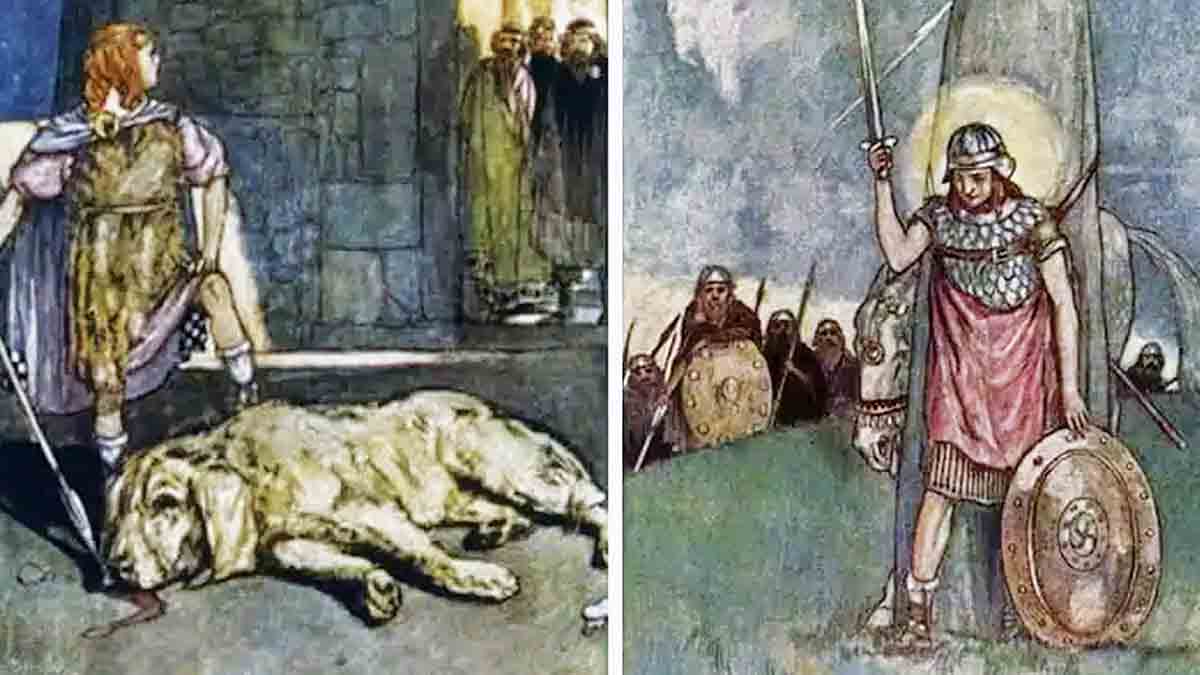THE LAST WORD
 By Pat Coughlan
By Pat Coughlan
Irish folklore is enchanting and educational, with ancient stories like The Salmon Of Knowledge sparking curiosity and discussions. These vibrant tales, passed down generations, breathe life into classrooms, keeping students’ attention rapt. As a student and later as a trainer I found that integrating folklore into lessons invites creativity and critical thinking.
It does not matter where I was training, be it in Kilkenny’s Noreside Resource Centre or Spain’s Centro de Formacion Profesional de Valencia, it worked. The magic of these tales lies in their ability to resonate, educate, and inspire across ages, offering students a fresh, engaging perspective on learning. They unlock imaginations and transform the educational experience, proving to be timeless tools for inspiration.
Gathering students for a bit of group storytelling can work wonders for teamwork. Imagine them sitting round, tossing ideas about, and bringing old Irish legends back to life. One might start off with the tale of Cú Chulainn, and another jumps in, adding their twist. This back-and-forth not only fuels their imagination but also teaches them to listen and build on each other’s contributions.
Then there’s the magic of drama exercises. Acting out a scene from a myth lets them step into another’s shoes, fostering empathy and co-operation. Think of folklore-based projects too, where they can dive deep, research together, and present their findings. These activities make learning more interactive and engaging, with everyone chipping in their part, inspiring not just a shared knowledge but a stronger camaraderie in the process.
When students dive into Irish folklore, they’re not just listening to yarns; they’re learning to communicate brilliantly. Traditional tales offer a rich playground for improving their vocabulory. Debating the morals in these tales — like whether Cú Chulainn’s actions were justifiable — sparks lively discussions and sharpens their ability to articulate thoughts. Plus, when they present their take on a tale, they’re not just talking; they’re using gestures, facial expressions, and all sorts of non-verbal cues. It’s like giving them a secret weapon for real-world interactions. Overall, storytelling rooted in folklore isn’t just fun; it’s a way to turn shy speakers into confident communicators who can hold their own in any chat.
Irish folklore is packed with puzzles and riddles that’d give any modern training game a run for its money. Integrating these age-old brain teasers into the classroom breathes life into the curriculum, making it both dynamic and engaging. Imagine students gathered around, scratching their heads over a riddle the leprechauns might have posed – it’s not just fun but also a brilliant exercise in critical thinking.
Getting the young, and not so young, folk to dive into folklore projects can’t half make a difference. By having them research local myths or put together a collection of old tales, they’re not just learning—they’re building a bit of pride in where they’re from. Imagine a school where students organise a folklore-themed event, pooling ideas and efforts to celebrate their shared heritage.
It’s more than just a school project; it’s turning learning into something that binds them closer. Projects like these don’t just instil knowledge; they forge a stronger community where everyone has a stake and a voice, cementing that collective identity we all crave.
Isn’t it grand when students feel a genuine connection to their roots? To spark that passion for Ireland’s cultural heritage, there’s no better tool than folklore. One way is through creative writing; imagine students crafting their own tales based on ancient myths. Art projects can also bring stories to life – murals depicting Cú Chulainn or handmade fairy doors in the classroom. Then there’s multimedia: short films, podcasts, and more to celebrate folklore. These activities aren’t just fun; they engage students deeply, making old tales meaningful.
This approach not only teaches history but makes students part of it, keeping Irish storytelling alive for generations to come.
















